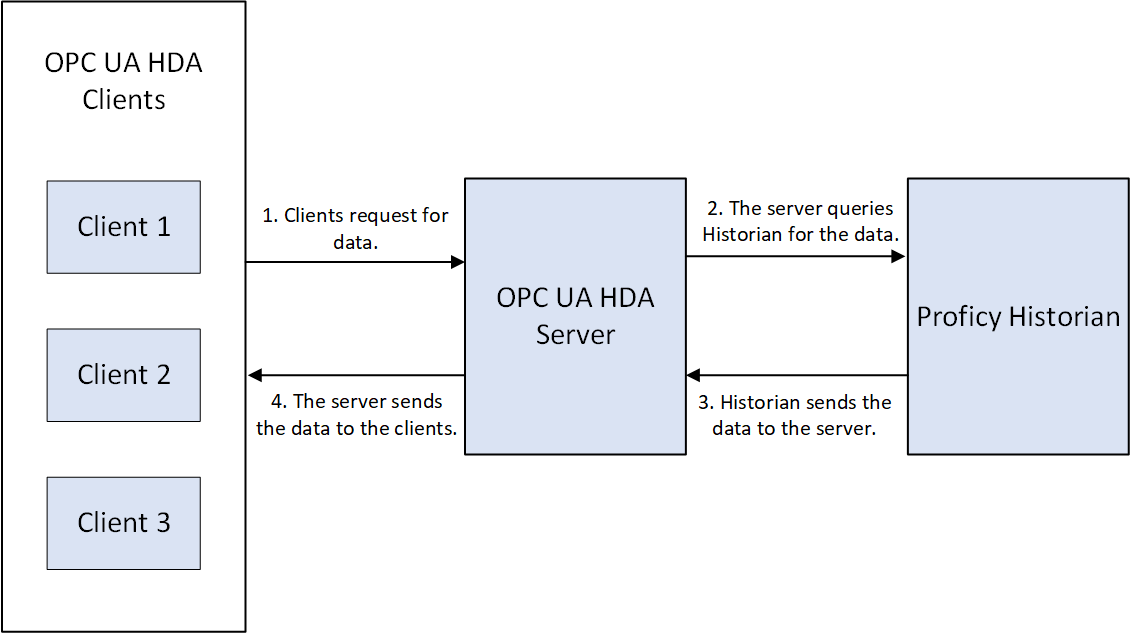About OPC UA HDA
About OPC Unified Access (UA) Historical Data Access (HDA)
OPC UA HDA is widespread standard, which provides specifications to retrieve and analyze historical process data. This data is typically stored in a process data archive, database, or a remote terminal unit (RTU). You can analyze this data for trending, fault prediction, performance assessment, and so on.
Advantages of Using OPC UA HDA
- With OPC UA HDA, the exchange of historical data between an application and any data archive is consistent. Therefore, OPC UA HDA client applications that implement trends, reports, or spreadsheets can retrieve historical process data from Historian and other OPC UA HDA servers.
- OPC UA HDA is created to allow various advanced automation applications to communicate with one another based on the historical data, regardless of the manufacturer or the platform/programming language on which they have been created. This allows greater flexibility and reliability when setting up automation systems.
- The OPC UA HDA server specification provides a common view of automation information managed by the system for which the server was written.
- Developing OPC UA-compliant applications is simplified because only one I/O interface is required.
- Using OPC-compliant applications increases the flexibility of your automation processes because they can also communicate with devices other than those specified by the applications' developers.
- Multiple OPC UA HDA compliant client applications can communicate with an OPC UA HDA server simultaneously.
Data Flow
The following diagram shows the data flow between the OPC UA HDA clients, the OPC UA HDA
server, and Proficy Historian.

